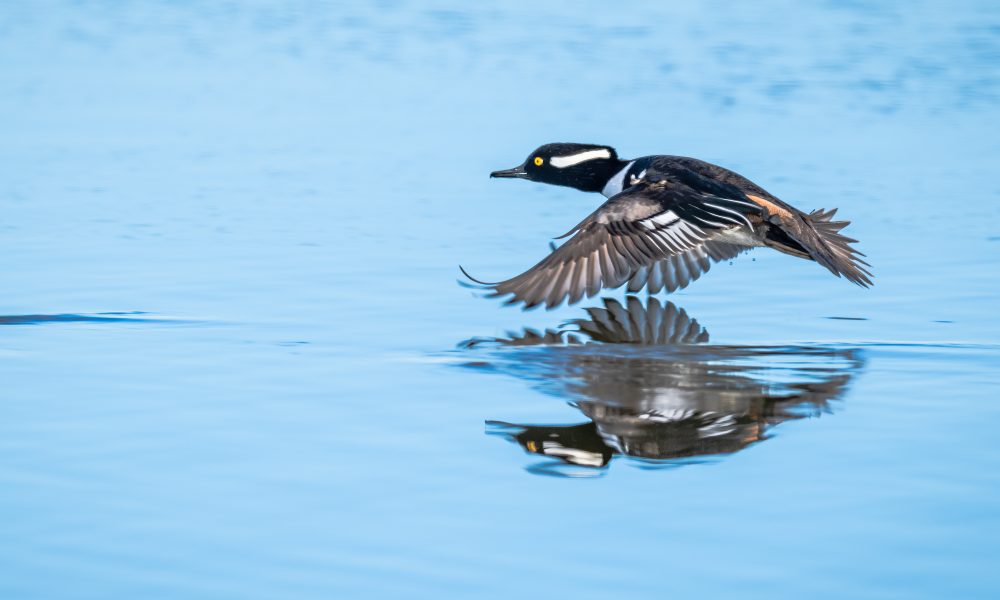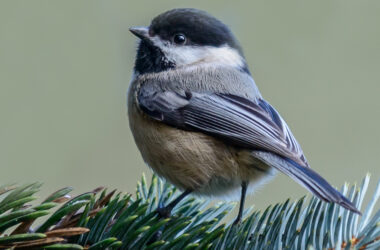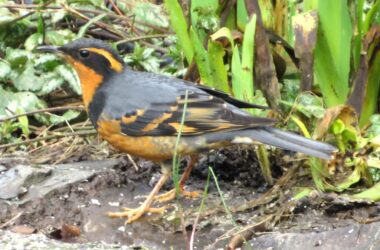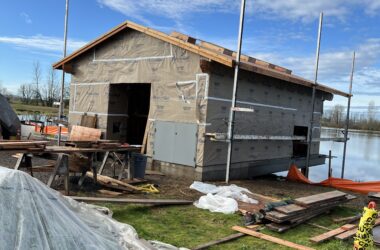All this rain. Of course ducks love it. Swimming is their life. Their waterproof outer feathers, dense insulation feathers next to the skin, cattails to hide in when the wind gets harsh—all this means the Salem area is an ideal place for a ducky winter vacation. Occasionally some favorite lake or marsh will freeze over but that rarely lasts long here. Besides, the Willamette and its tributaries never freeze. We are a locale with plenty of open water.
A large variety of ducks that can be seen around here now. On a great day around the waters here you might count up to 20 species. Most will be gone by mid-April. In most years, there are seven species of wild waterfowl that breed in the Portland Metro area and Willamette Valley and its neighboring mountains. These are wood duck (our most beautiful local nester), mallard, gadwall, cinnamon teal, common and hooded merganser, and the introduced resident Canada geese.
In cold months there are occasional tundra or trumpeter swans in places like Baskett Slough, Ankeny National Wildlife Refuge or on Sauvie Island. There are many thousands of cackling geese along the Willamette Valley. Duck species that usually present in small numbers include cinnamon teal, common goldeneye, redhead and canvasback. More numerous are wigeon, green-winged teal, pintail, shoveler, lesser scaup, ring-necked duck, bufflehead, and ruddy duck. Along the coast you could add three scoter species, red-breasted merganser and harlequin. That means you could count two dozen waterfowl species near here in a couple cold, wet days.
Where do the vacationing ducks go when they leave to nest? Many go north, some go east toward lakes, marshes or streams. Each duck has its decided preference. Buffleheads nest in an old flicker hole in a tree near a lake. So they nest in forests south of the treeless tundra of Canada and Alaska. The scoters all avoid trees and nest in open marshy areas north of the tree line across the Northern Hemisphere. The cackling geese nest along the western coast of Alaska and Canada’s north coast. Pintails nest across much of North America where marshes can be found — inland as far south as Colorado but mostly in the northern Great Plains and Canada.
If you find a few or even a few dozen ruddy ducks or wigeon, what does that signify? The U. S. Fish and Wildlife Service works with many agencies and organizations to provide an annual estimate.
From 2022, some examples of estimated populations: wigeon 2.1 million, mallard 7.2 million, pintail 1.8 million, shoveler 3 million, tundra swans 200,000. Oregon was estimated to be home to nearly 80,000 mallards and 344,000 ducks overall.
For information about upcoming Salem Audubon programs and activities, see www.salemaudubon.org, or Salem Audubon’s Facebook page.
Harry Fuller is an Oregon birder and natural history author of “Freeway Birding.” He is a member of the Salem Audubon Society. Contact him at [email protected] or atowhee.blog. His “Some Fascinating Things About Birds” column appears regularly in Salem Reporter.
JUST THE FACTS, FOR SALEM – We report on your community with care and depth, fairness and accuracy. Get local news that matters to you. Subscribe to Salem Reporter. Click I want to subscribe!
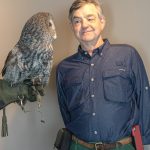
Harry Fuller is an Oregon birder and natural history author of three books: “Freeway Birding,” "Great Gray Owls of California, Oregon and Washington," and "San Francisco's Natural History--Sand Dunes to Streetcars." He leads birding trips for the Malheur Field Station. He is a member of the Salem Audubon Society, and leads bird trips locally. Harry has just published a new book, BIrding Harney County.

